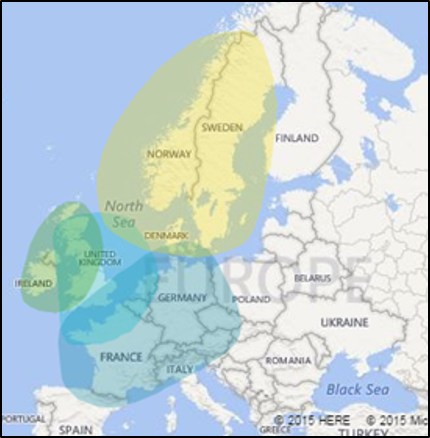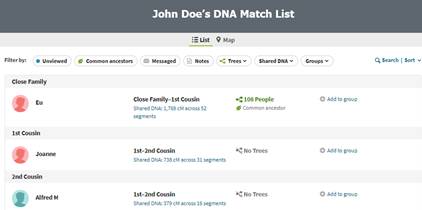How to use your DNA results to solve family mysteries.
Regardless of where you bought your DNA kit, all major DNA testing companies provide at least three tools on their websites. The first tool looks at “admixture” – the DNA you share with various populations around the world. (These are often called ethnicity maps). You will also receive a list of people with whom you share DNA – with the closest matches at the top of the list. Finally, you’ll have a few analysis tools to refine or simplify some of the research. While admixture maps are very popular, very colorful and reasonably easy to interpret, they are rarely of value in solving family mysteries. To do that, you will need to use the features associated with each company’s DNA match lists.


The most powerful feature is the ability to select any match and ask for a list of those testers who share DNA with that match and with you. The resulting testers are described as “In Common With” matches or “shared matches.” Using information about the quality and quantity of DNA shared with these matches and using the names in their family trees you can build out a network of other matches who are somehow related to you and that first target match. Within this network of connected DNA matches may be clues to a common ancestor – and that information may be the path beyond a brick wall.
These DNA clues can be the results of lines of descent from your ancestors or, unfortunately, just coincidence given the complicated nature of DNA inheritance. It is critical to avoid the latter and most companies provide more advanced tools to address this major concern. Those tools require skill to be used effectively but they add certainty, allowing you to associate specific ancestors with the network of these DNA cousins and to place those ancestors on your trees.
Finally, most testing companies provide applications which identify these DNA networks quickly – greatly reducing the work involved. Recently, 3d-party companies have joined in this effort – accelerating the process. A wealth of these new productivity tools come on-line each year.
In summary, the foundation of this analysis is our DNA match lists which we leverage by finding networks of shared matches – helping us to identify several potential common ancestors. We then use advanced tools to pinpoint the exact common ancestor from whom we inherited that piece of shared DNA – possibly resolving the mystery around one of our brick walls.
Intermediate DNA Analysis
Let our DNA experts help you quickly get up to speed with genetic genealogy’s key toolset.
$25.hr for members/$35.hr for Non-members
